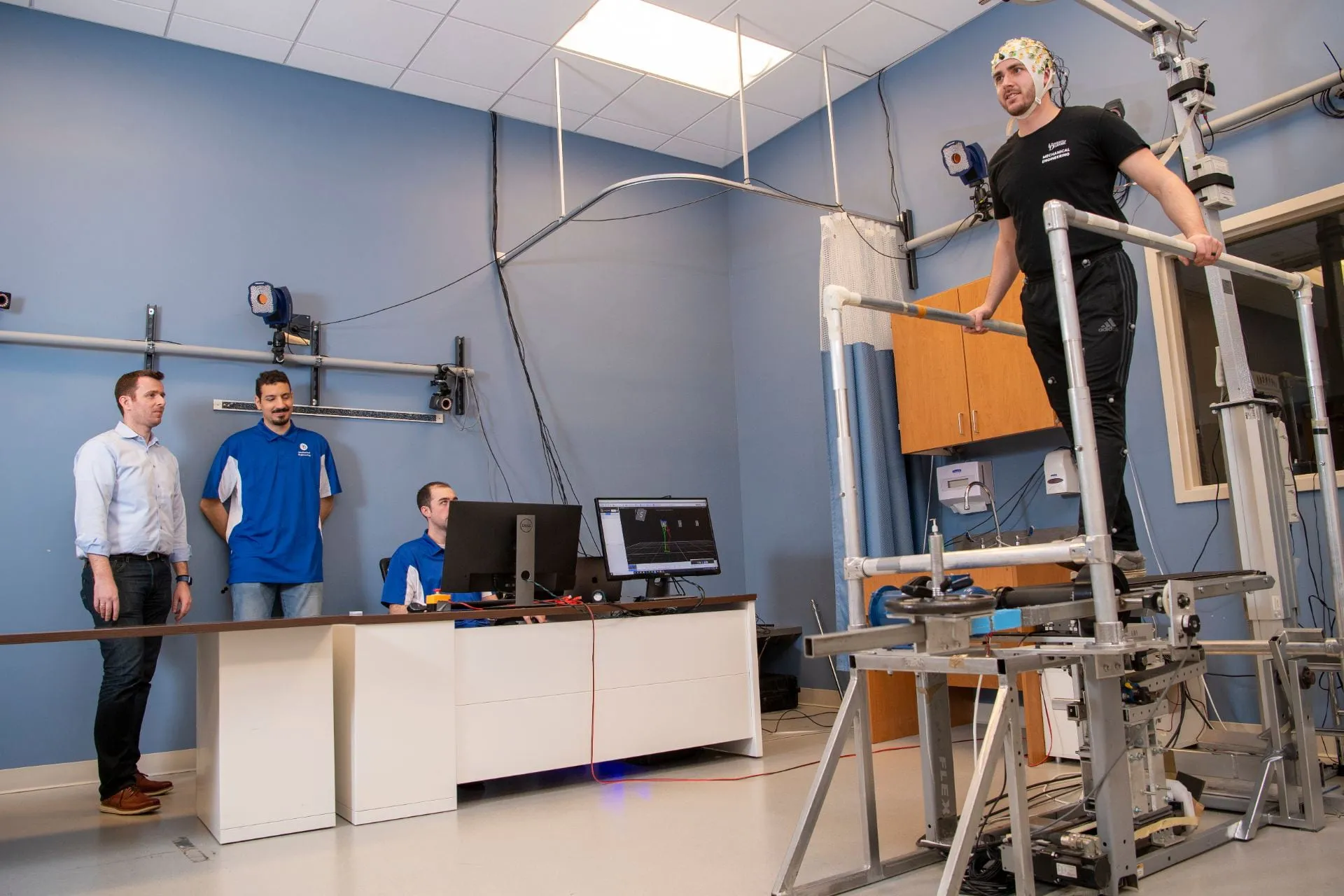Human-Oriented Robotics & Control Lab
What I Am Doing
Currently, as post-docorate researcher and previously for my Ph.D. program at the University of Delaware, I've had the opportunity to work as a Research Assistant in the Human-Oriented Robotics and Controls Lab under Panagiotis Artemiadis. During this time, I have contributed to three main projects: human data collection on our unique treadmill (the VST), gait modeling , and the design and construction of an updated version of our treadmill (VST 2). Work on these projects has consisted of both long-term independent and collaborative research. I have the following patents and have published the following papers:
Patents
A Dual-Belt Treadmill System with Controllable Stiffness. UD23-46, filed September 22, 2023. Provisional patent.
Journal Papers
V. Chambers and P. Artemiadis, "A model-based analysis of supraspinal mechanisms of inter-leg coordination in human gait: Toward model-informed robot-assisted rehabilitation." IEEE Transactions on Neural Systems and Rehabilitation Engineering, vol. 29, pp. 740-749, 2021. [Link]
V. Chambers and P. Artemiadis, "Using robot-assisted stiffness perturbations to evoke aftereffects useful to post-stroke gait rehabilitation." Frontiers in Robotics and AI, vol. 9, p. 1073746, 2023. [Link]
V. Chambers, M. Johnson, and P. Artemiadis, “Robot-Assisted Targeted Gait Training,” Journal of Kinesiology and Exercise Sciences, vol. 34, no. 105, pp. 11–12, 2024. [Link]
V. Chambers, et al. "The Variable Stiffness Treadmill (VST) 2.0: Development and Validation of a Unique Tool to Investigate Locomotion on Compliant Terrains." IEEE/ASME Transactions on Mechatronics (2023) [In Review]
V. Chambers and P. Artemiadis, “Unilaterally compliant walking leads to corrective aftereffects post-stroke,” IEEE Trans. Neural Syst. Rehabil. Eng., (2024) [In Review]
Conference Proceedings
V. Chambers and P. Artemiadis, "Repeated robot-assisted unilateral stiffness perturbations result in significant aftereffects relevant to post-stroke gait rehabilitation." 2022 International Conference on Robotics and Automation (ICRA). IEEE, 2022. [Link]
V. Chambers and P. Artemiadis, "A Model-Based Analysis of The Effect of Repeated Unilateral Low Stiffness Perturbations on Human Gait: Toward Robot-Assisted Rehabilitation." 2023 International Conference on Robotics and Automation (ICRA). IEEE, 2023. [Link]
Conference Abstracts
V. Chambers and P. Artemiadis, “A neuro-musculoskeletal model predicts the effect of a new type of perturbation on human walking” NSF DARE Conference: Transformative Opportunities for Modeling in Neurorehabilitation, Los Angeles, California; March 3-4, 2023.
What I've Learned
It is a privilege to work in HORC lab on projects with such potential to benefit stroke victims in the future. My time as an RA has given me a window into the world of engineering research and made me a more effective researcher. Working in the HORC lab has shown me how to read journal articles efficiently, extract important information, and synthesize that information with content from other papers. I have also been able to hone my technical writing and other technical skills such as MATLAB, python, and gait modeling. Additionally, this is the first time in my career that I am conducting long-term independent research, which has required a new level of time management and discipline. And, finally, working on more collaborative projects has helped me learn to listen well to others, and join our knowledge and ideas together to make progress toward our goals.
Video
